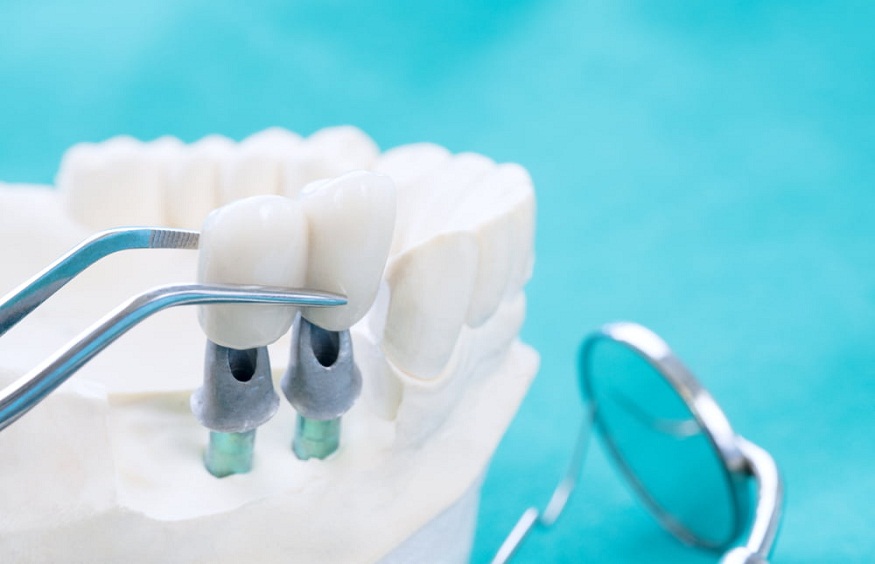Receiving dental bridges is a significant investment in your oral health and smile. Dentists worldwide are committed to ensuring a smooth and successful recovery. After receiving dental bridges in Leduc, AB, proper recovery and aftercare are crucial to maintain the longevity and integrity of your new restoration. By following a tailored recovery plan and practicing diligent oral hygiene, patients can minimize complications, ensure optimal comfort, and enjoy their restored smile for years to come.
In this article, we’ll outline essential guidelines for recovery and aftercare for dental bridge patients, helping you make the most of your dental investment.
What Are Dental Bridges?
A dental bridge is a fixed dental restoration used to replace one or more missing teeth, restoring oral function, aesthetics, and overall quality of life. Consisting of an artificial tooth (pontic) anchored to adjacent natural teeth (abutments) or dental implants, dental bridges fill the gap created by tooth loss. Available in various materials, including porcelain, ceramic, and metal, dental bridges are custom-crafted to match surrounding teeth in shape, size, and color. By distributing chewing forces evenly and preventing adjacent teeth from shifting, dental bridges provide a durable, natural-looking solution for individuals with missing teeth, enhancing smile confidence and promoting optimal oral health.
What Does Recovery For Dental Bridge Patients Involve?
Recovery after getting dental bridges is crucial for optimal healing and accurate outcomes. Here is what you can expect:
Immediate Recovery (First 24-48 Hours)
After the dental bridge procedure, you may experience:
- Mild discomfort: Temporary soreness, swelling, or sensitivity.
- Numbness: Local anesthesia effects may last a few hours.
- Bleeding: Minor bleeding or oozing from the gums.
To manage these symptoms:
- Take prescribed pain medication: As directed by your dentist.
- Apply ice packs: Reduce swelling and ease discomfort.
- Rest: Avoid strenuous activities.
- Eat soft foods: Opt for yogurt, soup, or scrambled eggs.
Short-Term Recovery (First Week)
During the first week, focus on:
- Gentle oral hygiene: Brush and floss carefully around the bridge.
- Avoiding hard or sticky foods: No chewing gum, hard candy, or crunchy snacks.
- Managing sensitivity: Use desensitizing toothpaste or mouthwash.
- Attending follow-up appointments: Monitor healing progress.
Long-Term Aftercare
To maintain your dental bridge and overall oral health:
- Brush and floss regularly: Use a soft-bristled toothbrush and gentle flossing.
- Use a waterpik: Clean around the bridge and between teeth.
- Visit your dentist regularly: Schedule check-ups every 6 months.
- Avoid biting or chewing hard objects: No ice, hard candy, or popcorn kernels.
- Monitor bridge stability: Report any looseness or shifting.
Common Complications and Solutions
- Bridge looseness: Contact your dentist for adjustment.
- Gum recession: Practice good oral hygiene and attend regular check-ups.
- Tooth decay: Maintain regular cleaning and fluoride treatments.
- Allergic reactions: Inform your dentist about any sensitivities.
What Are The Tips for Optimal Recovery and Aftercare?
Here are some valuable tips for optimal recovery and aftercare following dental bridge placement:
- Follow your dentist’s instructions carefully.
- Take prescribed pain medication as directed.
- Apply ice packs to reduce swelling.
- Rest and avoid strenuous activities.
- Eat soft foods (yogurt, soup, scrambled eggs).
- Practice gentle oral hygiene (brush and floss carefully).
- Avoid hard or sticky foods (chewing gum, hard candy).
- Manage sensitivity with desensitizing toothpaste or mouthwash.
- Attend follow-up appointments for monitoring.
- Brush and floss regularly (twice a day).
- Use a waterpik for interdental cleaning.
- Visit your dentist every 6 months for check-ups.
- Avoid biting or chewing hard objects (ice, hard candy).
- Monitor bridge stability and report any issues.
- Clean your bridge with a soft-bristled toothbrush.
- Use an interdental brush for hard-to-reach areas.
Recovery and aftercare for dental bridge patients require attention to detail and commitment to maintaining good oral hygiene. By following these guidelines and your dentist’s instructions, you’ll ensure a successful and long-lasting dental bridge.



